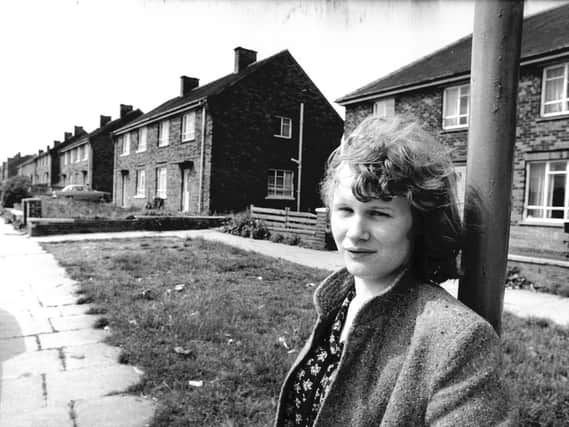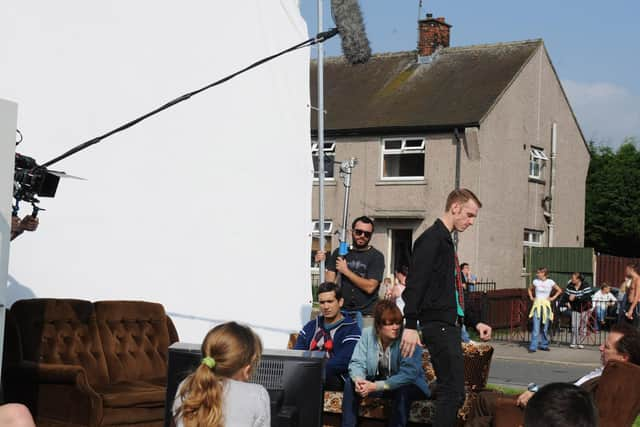Andrea Dunbar 'deserves her place on Bradford’s Literary Wall of Fame' after plays on working-class life during Thatcher era


Thirty years ago, on the afternoon of December 20, 1990, the playwright Andrea Dunbar walked into her local, The Beacon, for the very last time. She ordered half a lager and sat down in the tap room, where she complained of headaches and buzzing in her ears, a pain that was becoming unbearable.
It was to be the last drink she would have there, and The Beacon, the source of her creative inspiration, was the place where her conscious life ended. Minutes later, she collapsed in the toilets and was rushed to hospital suffering from a brain haemorrhage and died. She was 29.
Advertisement
Hide AdAdvertisement
Hide AdDunbar was the author of three classic plays on working-class life during the Thatcher era. She wrote the screenplay for a successful film adaptation and, at the time of her death, was working on a final, unfinished script, The Moneylenders, which was based on a gang of unscrupulous debt collectors on the Buttershaw estate, the setting for all of her work.


Writing in green biro on notepads, Andrea would sit at home, watch Max Headroom, and chain smoke Sovereign Blacks while recalling conversations she overheard in The Beacon the previous night.
The pub, which has recently been demolished, was in the opening scene for Rita, Sue and Bob Too, a film based on Dunbar’s play directed by Alan Clarke in 1987. Two years later, Yorkshire Television would return to the same spot, where Andrea was filmed drinking with regulars, as part of an interview with Kay Mellor for the Great North Show.
This lost documentary reflects on the damage the film had on Andrea’s life, her deep affection for the local community and the freedom she felt when writing for the stage.
Advertisement
Hide AdAdvertisement
Hide AdAlmost penniless (she had only £45 to her name at the time of her death), she had a job fixing speaker parts into cabinets on a factory production line, and after a recent court case, was paying back the £5,400 in illegal benefits that she had claimed whilst receiving royalties at the rate of £3 a week. It was a grim development for one of Yorkshire’s greatest writers.
Born in East Bowling in 1961, Andrea Dunbar was the third of eight children. Her parents worked in the textile industry, but fell into economic hardship during her childhood, and were given accommodation on Buttershaw, an estate with a reputation for housing large, problem families.
The frequently violent, foul-mouthed environment that surrounded her formed the dramatic nucleus of her writing, and her three plays displayed an impressive ear for dialogue, an unbridled social realism and contained a black northern wit that gave her writing a wild, ribald energy that is unsurpassed.
Her first foray into writing began at school, when a teacher encouraged her to record arguments and conversations between family and friends upon discovering her extraordinary gift for total recall. This formed the basis of her play The Arbor and became her Drama CSE assignment which she achieved an A for.
Advertisement
Hide AdAdvertisement
Hide AdTwo years after leaving school, she worked on the French Comb at Bowling Mills, and started dating a taxi driver who drove her home after late shifts. Their relationship deteriorated after she gave birth to their daughter, and fleeing domestic violence, she was given sanctuary at a Women’s Aid refuge in Keighley.
It was here that she met two support workers who were impressed that this shy young woman (who was the first resident) had turned up with a carrier bag full of notes, which was a rarity.
They passed on her script to Liane Aukin, who assisted her in developing The Arbor, before recommending her to the esteemed Royal Court Theatre, in London. Within a year, Andrea’s work had been staged at the venue, where it won the Young Writer’s Award in 1980.
She was the youngest person in the theatre’s history to have had their worked performed at the venue. Her name was displayed across Sloane Square in lights, a sight she could never had predicted just a few years previously.
Advertisement
Hide AdAdvertisement
Hide AdAt one point she had intended to write about her friend Maureen Long, one of Peter Sutcliffe’s surviving victims, who she drank with in The Beacon. But it was her second play, the semi-autobiographical Rita, Sue and Bob Too, that brought her success.
The film adaptation, which was an amalgamation of her first two plays, was infamous for its scene of Bob’s car and its reclining seats, or the party filmed in a Working Men’s Club with Black Lace providing the cringeworthy soundtrack. Andrea considered it to be a dark comedy about everyday life that centred on the relationship between two teenage girls, and their affair with a married man, Bob.
When Alan Clarke started filming, Andrea was barred from the set. The film had a different ending to the play, a decision she was furious about, believing that the cinematic version had rewarded the appalling behaviour of the sleazy Bob, when in fact, it should have focused on the powerful friendship between teenage babysitters Rita and Sue.
Speaking to YTV, she commented, “Once a director gets hold of it, you have no say. But then again, I’ve got to see it how I want to see it. And not as they do. I need that. My view, not their view.” The film with its notorious billboards containing the tagline ‘Thatcher’s Britain with her knickers down’ was instantly controversial and it continues to provoke debate to this day. Rita, Sue and Bob Too would not be made in 2020, or if it was, the storyline would be drastically altered.
Advertisement
Hide AdAdvertisement
Hide AdIn the years following the film’s release, Andrea’s increasingly turbulent life, one of poverty, the struggle of single motherhood, and the task of writing, took its toll. The pressure of fame, not knowing how to handle money, or even having the facilities to type her own scripts, eventually became so unbearable that walking away from writing was the only option after all the trouble it had brought her.
Through her work, council estate life was depicted in an uncompromising, hard-hitting style. Andrea’s difficult truths were unpalatable for some, but the power and integrity of her writing remains intact.
Perhaps she was Yorkshire’s very own Shelagh Delaney, Jim Allen or Alan Sillitoe, yet there was little indication of her importance as a writer when I started researching her story. My novel, Black Teeth and a Brilliant Smile, was born out of a sense of frustration: no book had been written about her, I wanted to read one, so I wrote it myself.
In Bradford today, there is scant indication of its famous former resident, or public acknowledgment, aside from a painting in an underpass, or a blue plaque on the wall of her former house on Brafferton Arbor.
Advertisement
Hide AdAdvertisement
Hide AdIt would be a fitting tribute to see her acknowledged alongside J.B. Priestley or the Brontës: her writing created some of the defining depictions of working-class life and for that reason alone she deserves her place on Bradford’s Literary Wall of Fame.
Adelle Stripe is the author of Black Teeth and a Brilliant Smile, published by Fleet (£8.99).
Support The Yorkshire Post and become a subscriber today. Your subscription will help us to continue to bring quality news to the people of Yorkshire. In return, you'll see fewer ads on site, get free access to our app and receive exclusive members-only offers. Click here to subscribe.